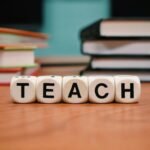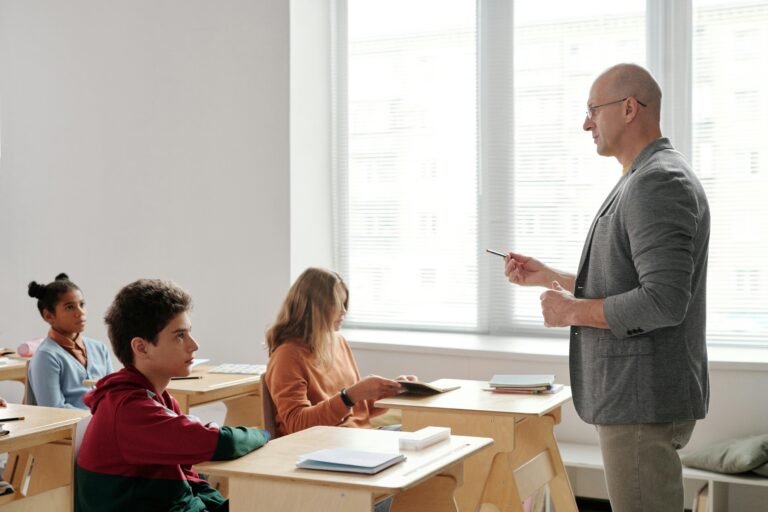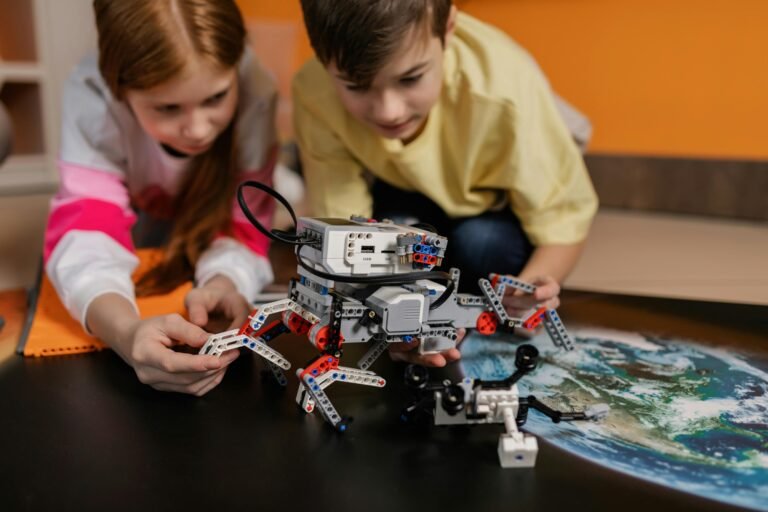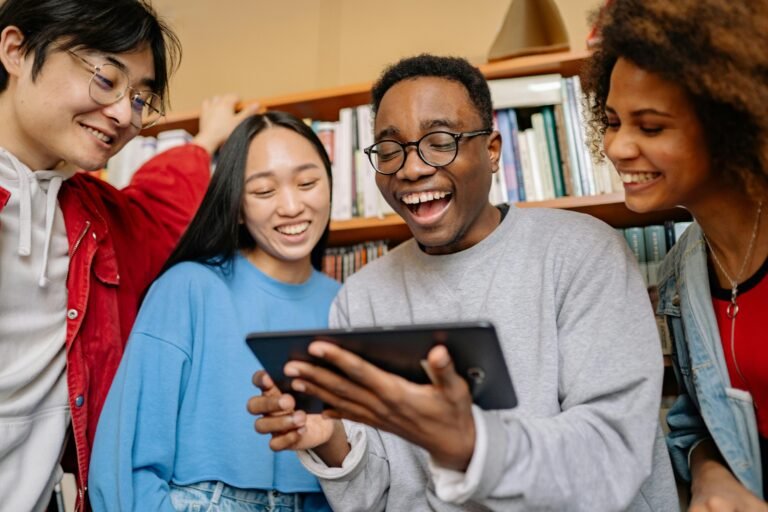Project Based Learning (PBL) continues to be a powerful strategy in upper elementary classrooms. Students in grades 3 through 5 are ready to think more deeply, ask tougher questions, and tackle real-world issues in increasingly sophisticated ways. Whether they’re publishing books, designing board games, or building museum exhibits, students in this age range thrive when their learning is hands-on, authentic, and student-driven.
In this guide, you’ll find a curated list of PBL prompts by grade and subject—each featuring:
-
A Driving Question—a spark to pique curiosity.
-
A Brief Description—how the project unfolds.
-
Possible Outcomes or Final Products—tangible results students can share, celebrate, and reflect upon.
These projects can be launched as-is or tailored to fit your curriculum, classroom needs, or student interests.
Project-Based Learning (PBL) Prompts for Grades 3–5: Engaging Minds Through Purposeful Projects
Grade 3 Projects: Growing Writers, Designers, and Scientists
Language Arts – Driving Question: How can we write and publish our own books?
Description:
Students explore fiction and nonfiction genres and then create original books based on a topic or theme of their choice. They walk through the writing process—from drafting to revising—and add visual elements with hand-drawn or digital illustrations. Final books are either printed or digitally published and shared with peers or families through book readings or showcases.
Possible Outcomes/Products:
- Published books (print or digital)
- Original illustrations
- Peer reviews or written recommendations
- Book talks or classroom “author events”
Math – Driving Question: How can we create and use a math board game?
Description:
Students explore math concepts like fractions, place value, or geometry by designing their own board games. They test existing games, identify how math is used in gameplay, and then create original games that are both educational and fun. They refine their games using peer feedback and then host a game day to play with classmates.
Possible Outcomes/Products:
- Original board games
- Rulebooks or instruction sheets
- Peer feedback or revision rubrics
- Math game reflections or scorecards
Science – Driving Question: How can we create and use a simple machine?
Description:
To understand how machines make work easier, students build functional models of simple machines (e.g., pulleys, levers, inclined planes). They research real-world applications, brainstorm ideas, and use everyday materials to construct and test their inventions. Students analyze performance data and present their findings.
Possible Outcomes/Products:
- Working models of simple machines
- Charts or data tables (force, distance, speed)
- Performance analysis reports
- Demonstration videos or science fair-style presentations
Social Studies – Driving Question: How can we celebrate the diversity of our community?
Description:
Students learn about the diverse cultures within their classroom and community. Through interviews, research, and family stories, they create a cultural artifact (map, collage, poem, recipe book, etc.) that represents their heritage. The project culminates in a multicultural celebration where students share their work with guests.
Possible Outcomes/Products:
- Cultural artifacts and family stories
- Display boards or interactive posters
- Class-hosted multicultural fair
- Invitations, flyers, or programs
Grade 4 Projects: Performers, Podcasters, and Travel Experts
Language Arts – Driving Question: How can we create and perform a puppet show based on a fairy tale?
Description:
Students select and adapt a classic fairy tale into a performance-ready puppet show. They write scripts, design puppets, and rehearse scenes. Along the way, they explore story structure, dialogue, tone, and audience. Their shows are performed for classmates or younger students.
Possible Outcomes/Products:
- Original puppet scripts
- Handmade puppets and sets
- Puppet show performances (live or recorded)
- Audience feedback forms
Language Arts – Driving Question: How can we create and perform a skit based on a book or a movie?
Description:
Students reinterpret scenes from familiar books or movies through drama. They write scripts, make props and costumes, and act out their scenes for an audience. This project builds literary analysis and public speaking skills in a creative and collaborative format.
Possible Outcomes/Products:
- Theatrical scripts
- Costumes, props, or scenery
- Student-led performances
- Reflective writing on the performance process
Social Studies – Driving Question: How can we create a podcast about a state or a country?
Description:
Students choose a U.S. state or a foreign country and research its geography, culture, and history. They script and record educational podcasts using digital tools and share them with classmates or publish them online. This project integrates writing, speaking, and technology skills.
Possible Outcomes/Products:
- Audio podcasts (MP3 or streaming)
- Podcast scripts and research notes
- Bibliographies or source lists
- Online podcast hubs or listening centers
Social Studies – Driving Question: How can we create a travel guide for our state?
Description:
Students act as travel writers by designing a guide for their home state. They explore attractions, local culture, geography, and history, then choose how to present the information: a tri-fold brochure, a website, or a podcast. They focus on persuasive language and engaging visuals.
Possible Outcomes/Products:
- Travel guides (print or digital)
- Maps, diagrams, or image galleries
- Student presentations or visitor showcases
- Class “Travel Expo” event
Grade 5 Projects: Publishing, Producing, and Preserving History
Language Arts – Driving Question: How can we create and publish our own podcasts?
Description:
Students plan and record their own podcasts in a genre of their choosing (e.g., news, storytelling, interviews, debates). They write scripts, conduct interviews, add music or sound effects, and edit audio using digital software. Podcasts are shared with classmates, parents, or the school community.
Possible Outcomes/Products:
- Podcasts with student voices
- Podcast scripts and production plans
- Online hosting or listening stations
- Peer and audience reviews
Language Arts – Driving Question: How can we create and publish our own comic books?
Description:
Students write and illustrate original comic books based on a theme, story, or genre of interest. They use storyboard planning, dialogue writing, and visual storytelling techniques. After revising with peer feedback, they publish their comics digitally or in print.
Possible Outcomes/Products:
- Comic books (print or online)
- Storyboards or character maps
- Illustrations using various media
- Reader feedback or comic book readings
Social Studies – Driving Question: How can we create a museum exhibit about the American Revolution?
Description:
Students dive into the American Revolution, exploring its events, key figures, and multiple perspectives. Working in teams, they curate exhibits including primary sources, artifacts, timelines, and more. The final product is a museum-style showcase presented to peers or families.
Possible Outcomes/Products:
- Exhibit displays (dioramas, timelines, posters)
- Research summaries and source citations
- Presentation scripts or docent tours
- Videos or digital exhibits
Social Studies – Driving Question: How can we create a brochure about a national park?
Description:
Students research a U.S. national park, focusing on its geography, wildlife, conservation efforts, and tourist activities. They use persuasive writing and visuals to create brochures aimed at encouraging visitors to explore and protect the park.
Possible Outcomes/Products:
- Travel brochures (print or digital)
- Illustrations, maps, or infographics
- Park presentations or slideshow tours
- Brochure-sharing stations or visitor kits
Tips for Bringing These Projects to Life
-
Customize prompts to reflect local contexts—seasonal themes, neighborhood issues, school initiatives.
-
Gather inexpensive materials: recycled bits, craft supplies, repurposed items. You don’t need expensive resources.
-
Use visual scaffolds: posters or anchor charts to remind students of steps and objectives.
-
Pair vocational skills with reflection: sketching, counting, measuring, writing—valuable for all academic areas.
-
Create routines: Daily journal time, routine measurement periods.
-
Build in sharing: Presentations, classroom galleries, parent showcases, video snippets.
-
Encourage reflection: Ask simple prompts like “What worked well?” “What would you do differently?” “What surprised you?”
Why This Kind of PBL Works in Grades 3–5
Project Based Learning is particularly effective in upper elementary grades because it taps into a powerful combination of developmental readiness and growing independence. Students in grades 3–5 are transitioning from learning to read and write to using those skills to explore, create, and express complex ideas. Here’s why this kind of PBL resonates so strongly with learners at this stage:
1. Increased Cognitive Capacity
By grades 3–5, students are capable of higher-order thinking. They’re ready to ask big questions, draw connections across subjects, and consider multiple perspectives. PBL encourages them to apply knowledge in meaningful ways—such as building a weather station or writing a historical podcast—which deepens comprehension and retention.
2. Growing Desire for Autonomy
Upper elementary students want more say in how they learn. PBL supports student choice and voice, allowing them to select topics, create solutions, and take responsibility for the final product. This not only boosts motivation but also strengthens executive functioning skills like planning, organizing, and time management.
3. Authentic Purpose Fuels Engagement
At this age, students are beginning to seek real-world relevance. They want to know why what they’re learning matters. PBL provides a clear purpose—from creating a brochure to inform tourists to designing a math game others can play. Students see that their work has value beyond the classroom.
4. Collaboration Feels Meaningful
Students in grades 3–5 are learning how to be teammates, not just classmates. PBL offers authentic opportunities for cooperative learning: giving and receiving feedback, dividing tasks, and celebrating shared success. These experiences lay the groundwork for social-emotional growth and positive group dynamics.
5. Opportunities to Showcase Mastery
Whether students are performing a skit, presenting a museum exhibit, or publishing a book, PBL allows for creative expression and multiple modes of assessment. This helps students of diverse learning styles and strengths shine—especially those who may struggle with traditional tests or worksheets.
In Closing
Project Based Learning in grades 3–5 offers a powerful way to blend academic learning with creativity, purpose, and voice. When students are given the opportunity to research, design, build, perform, and present, they aren’t just memorizing facts—they’re becoming independent thinkers, collaborators, and problem-solvers.
By adapting the prompts above or creating your own, you give students the tools to learn deeply and contribute meaningfully to their learning communities. With PBL, learning becomes a journey of curiosity, creation, and connection.
Related Posts
Inquiry-Based Learning: A Powerful Approach for K-12 Education
Project-Based Learning: A Student-Centered Approach for K-12 Education
Inquiry Based Learning vs Project Based Learning: What’s the Difference?
Terms Used in Curriculum and Instruction for K-12 schools









